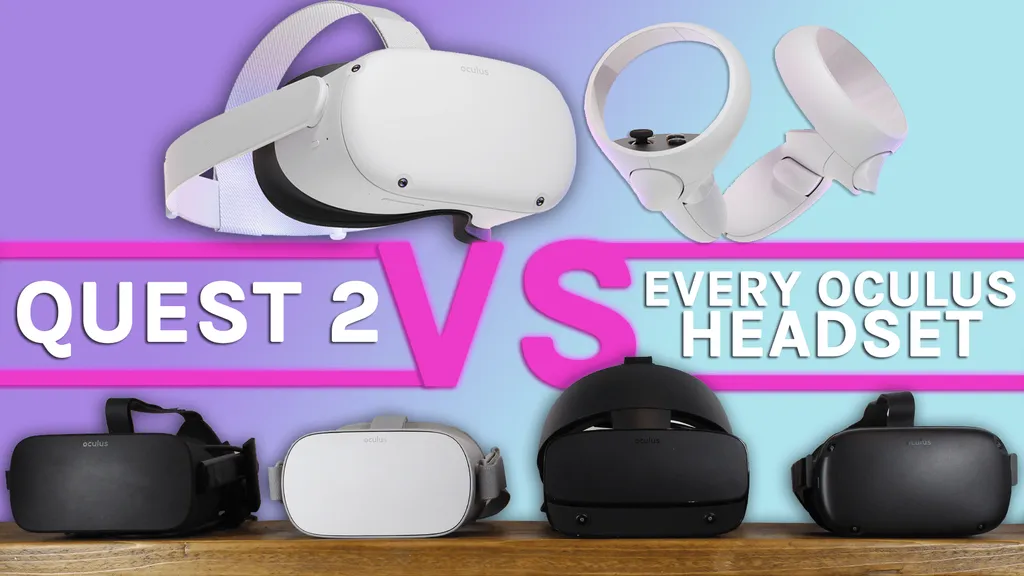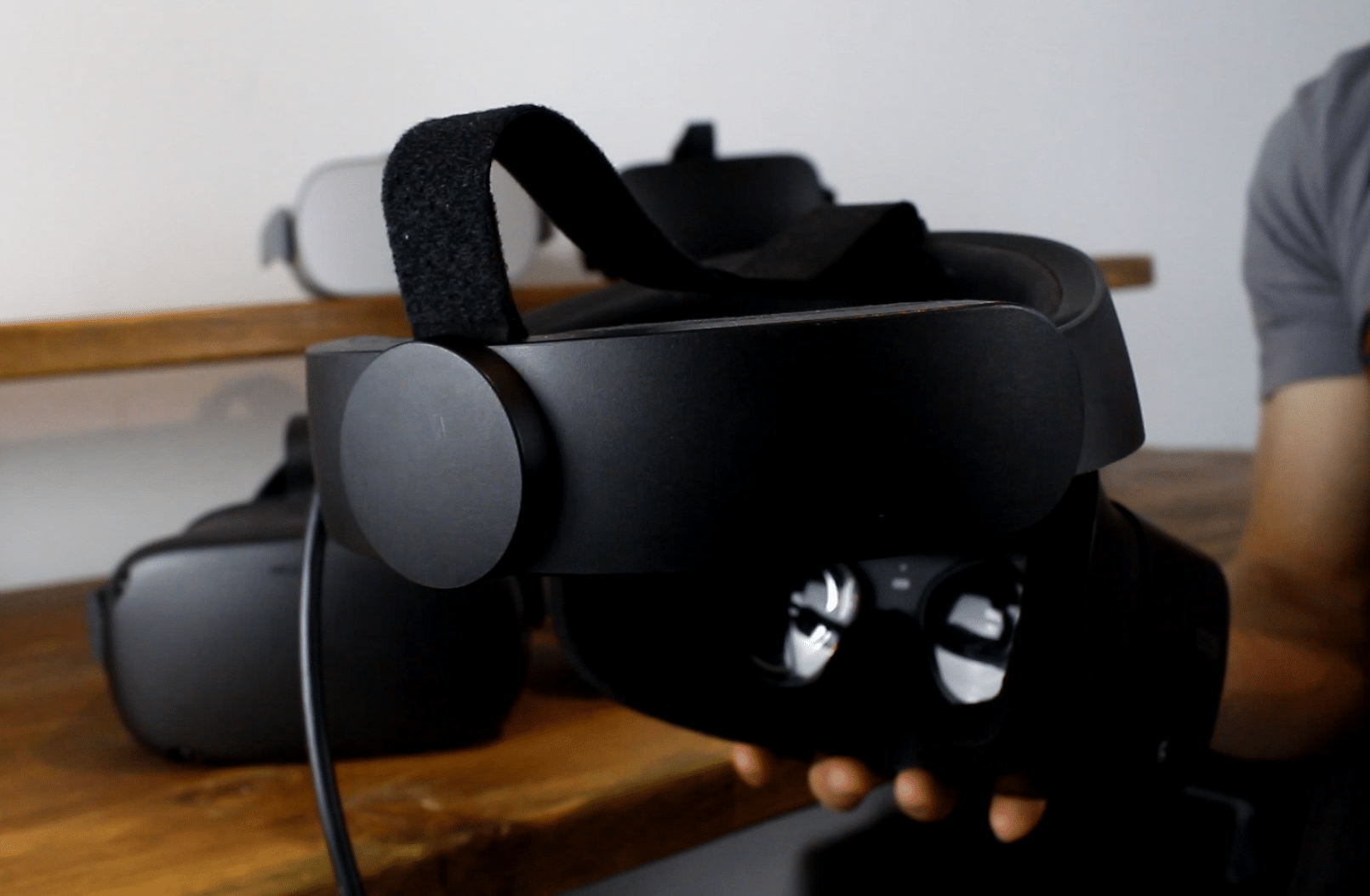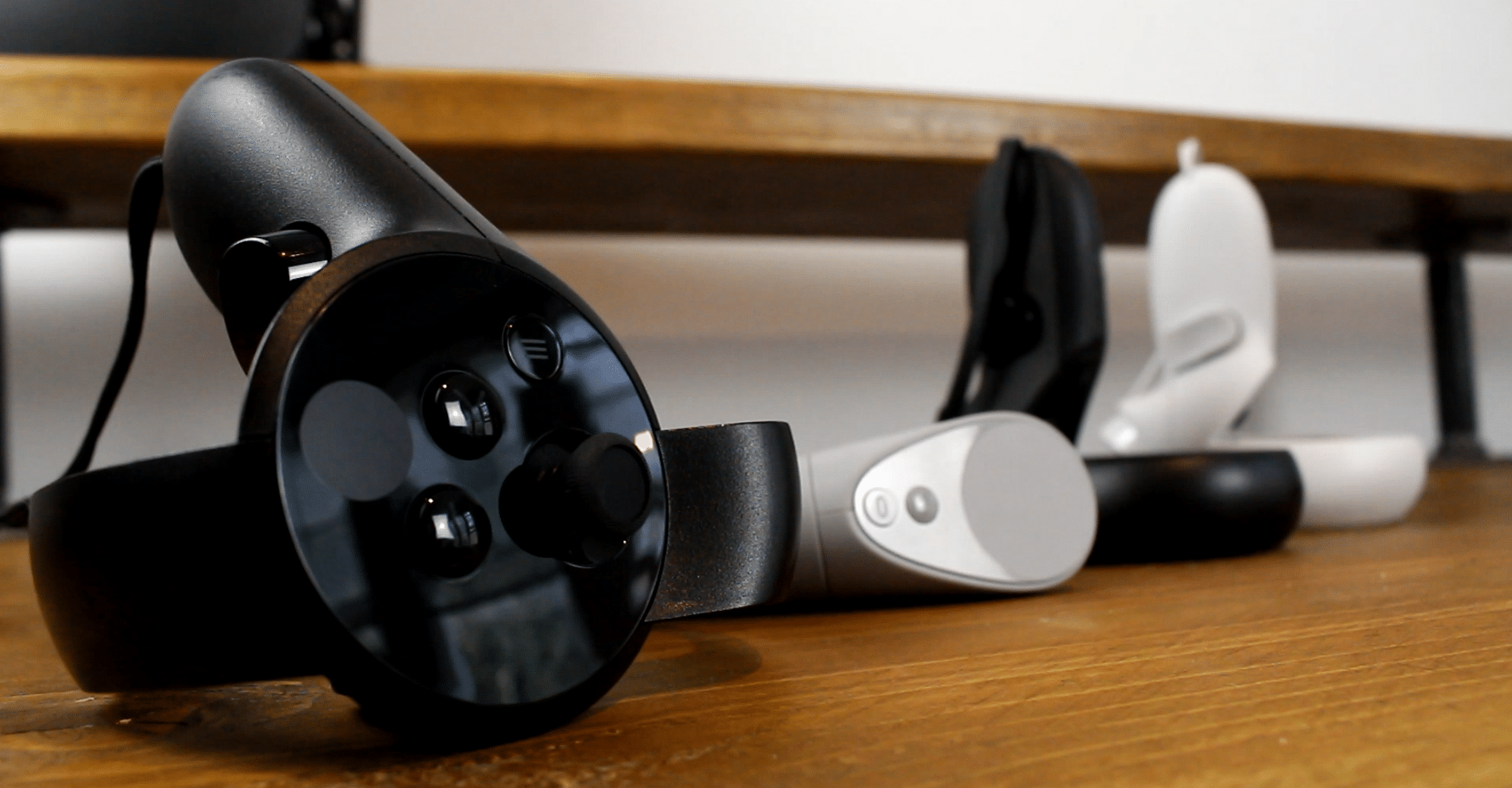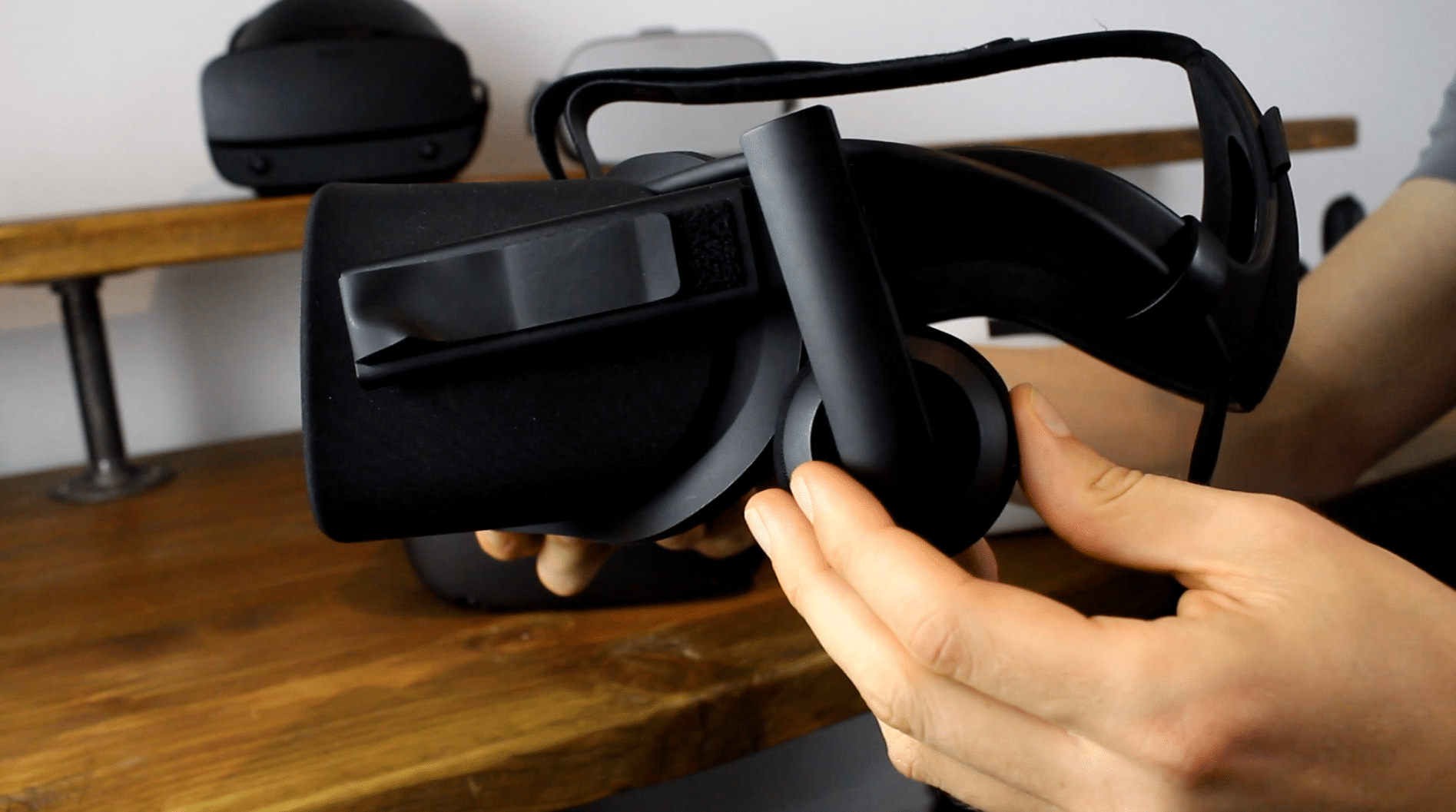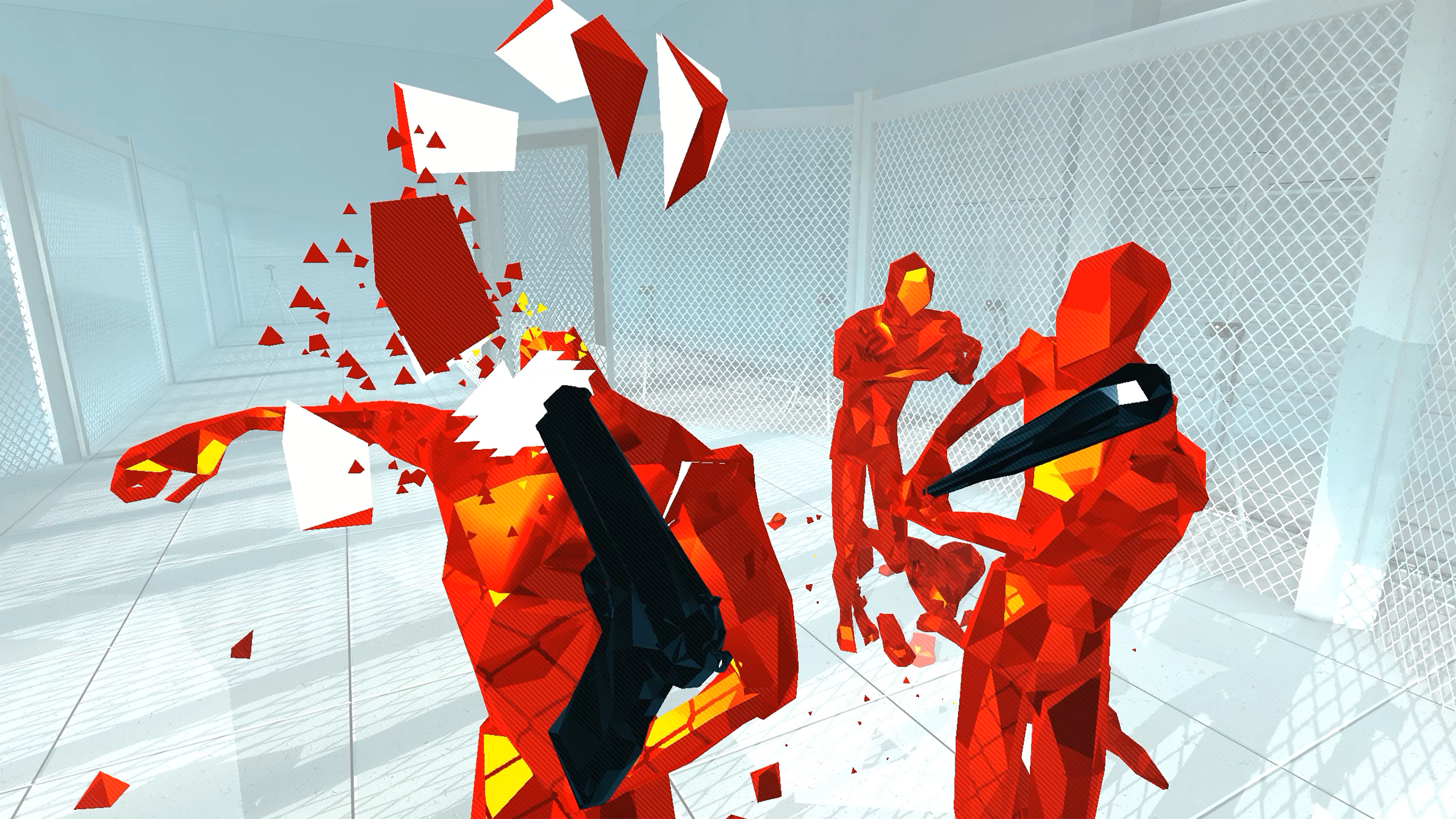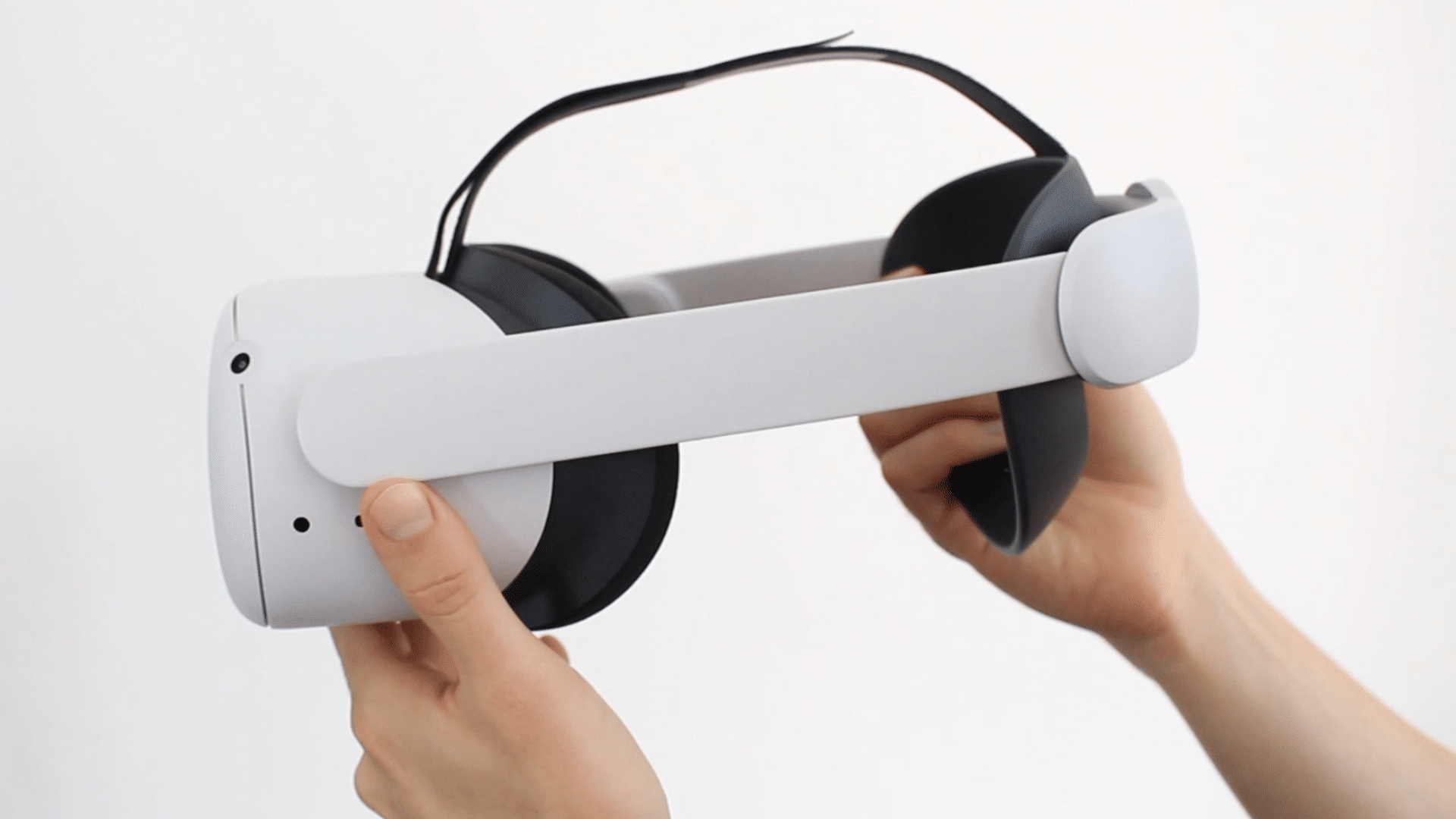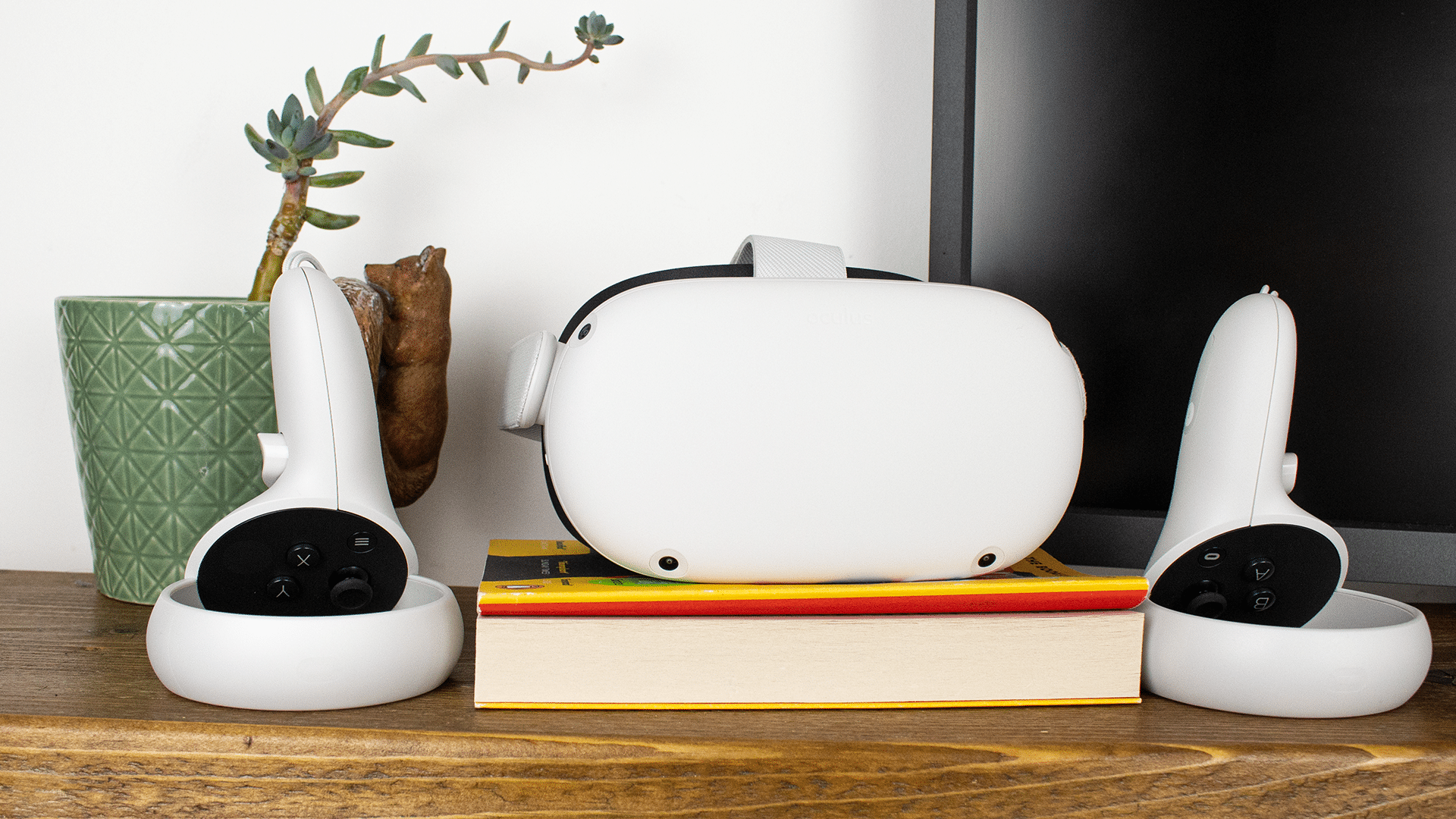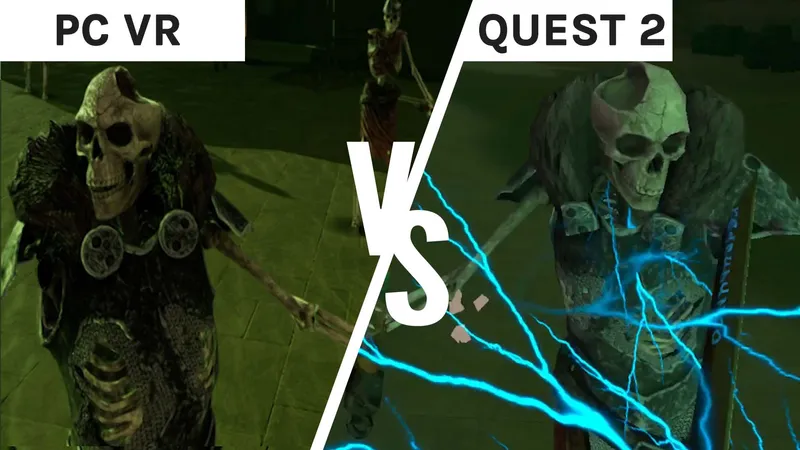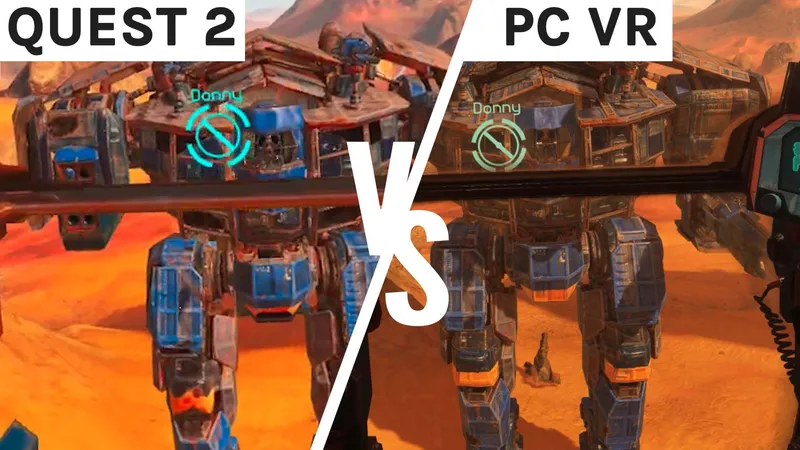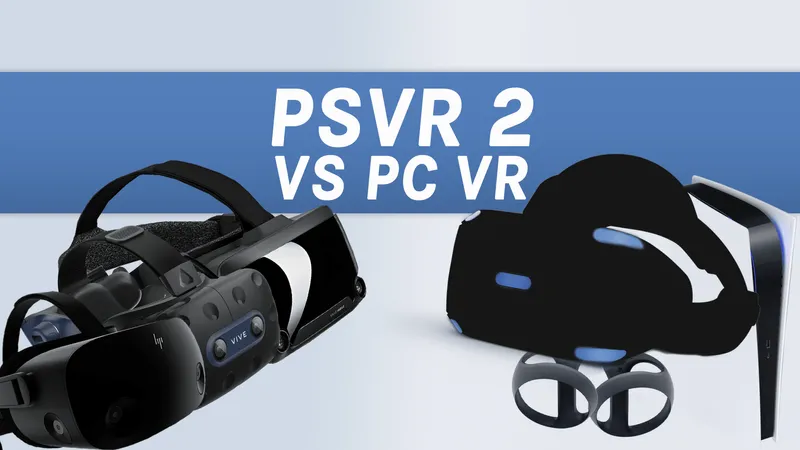Believe it or not, the Oculus Quest 2 is Facebook’s fifth VR headset in four years (not counting Gear VR and its roughly one million variations).
But, while the headset is arguably the company’s best yet, not every aspect is improved over its predecessors, often in some surprising ways.
For Facebook, making a VR headset — especially one priced at $299 — is often about making compromises to drive down cost whilst improving other components to enhance the experience as much as possible. You can see it in, say, Quest 2’s switch from an IPD slider to a three-tier setting.
So, without further ado, let’s pour-over every facet of each design. This is Quest 2 vs every Oculus headset ever (except Gear VR).
Quest 2 vs Every Oculus Headset Ever
Specs
| Rift | Go | Quest | Rift S | Quest 2 | |
| Type | PC-only | Standalone | Standalone, later PC too via $79 cable | PC-only | Hybrid with $79 cable |
| Launch | mid 2016 | mid 2018 | mid 2019 | mid 2019 | late 2020 |
| Display per eye | 1080×1200 OLED | 1280×1440 LCD | 1440×1600 OLED | 1280×1440 LCD | 1832×1920 LCD |
| Refresh Rate | 90Hz | 60Hz / 72Hz | 72Hz | 80Hz | 72Hz / 90Hz |
| Lens Separation Control | Granular 58mm-70mm | None | Granular 58mm-70mm | None | 3-Stage (58mm / 63mm / 68mm) |
| Built-In Audio | Good Quality Headphones | Strap Audio | Strap Audio | Strap Audio | Strap Audio |
| Tracking | 2-4 External USB Sensors | 3DoF-only | Inside-Out SLAM | Inside-Out SLAM | Inside-Out SLAM |
| Launch Price | $599 with gamepad $798 with controllers | $199 (32GB) $299 (64GB) | $399 (64GB) $499 (128GB) | $399 | $299 (64GB) $399 (256GB) |
Tech specs are one of two areas where Quest 2 easily comes out on top. On the standalone front, it’s more powerful than both the original Oculus Quest and Oculus Go with its Qualcomm XR2 chipset, meaning we should see better performance and visual fidelity out of apps running on the device. But the most immediate change here is the display. Quest 2 offers 1832 x 1920 resolution per eye.
Going back all the way back to 2016, the original Oculus Rift boasted a resolution of 1080 x 1200 pixels per eye. It was decent for the time, but use it today and you’ll notice some heavy screen door effect distortion compared to newer headsets. Facebook’s made incremental jumps in resolution with its later headsets. 2018’s Oculus Go had a resolution of 1280 × 1440 pixels per eye, which is the same as what we saw in the 2019 refresh, the Oculus Rift S. The Oculus Quest, meanwhile, has a resolution of 1440 x 1600 per eye. In other words, Quest 2 offers easily the sharpest image inside an Oculus headset to date.
However, unlike the original Rift and Quest, which used vibrant OLED displays, the device switches to LCD like in Go and Rift 2, so you don’t quite get the same richness in shadows and dark areas. But you do get the full number of red, green and blue subpixels, so the sharpness boost is more significant than the raw numbers suggest. Finally, Quest 2 makes the jump to a 90Hz refresh rate over Quest s’ 72Hz, which should bring it in line with the standard on its PC VR devices, though only the Home environment and browser app will support it at launch.
Comfort
The Quest 2 is a lighter and more comfortable headset than the original Quest. It weighs 503g compared to Quest’s 588g, and you definitely notice the difference on your face. But it’s about 30g heavier than the Oculus Go, which only offers simplistic 3DOF tracking. The original Oculus Rift was also lighter at 470g though obviously had a cable tugging at your head.
But there’s a lot more to comfort than weight. Quest 2’s soft, stretchy strap is definitely fairer on the head than the original Oculus Rift or Quest’s hard straps. More tellingly though, for my money, none of these headset’s designs come close to matching one of Facebook’s heaviest headsets, the Oculus Rift S.
At 561g, Rift S is only lighter than the original Quest in the entire run of Oculus headsets. But Facebook employed a halo ring design, with a strap that rests on the top of your head and a counterweight on the back, resting the visor comfortably on your face. To this day it remains easily the most comfortable VR headset Facebook has put out, though you can get an official Elite Strap or Elite Battery Strap for Quest 2 that improves things considerably.
Controllers
Oculus controllers have seen numerous revisions over the past few years. There was the original Touch controllers that launched six months after the Rift, they have a down-facing tracking ring, triggers, grips and face buttons and sensors to tell when you were touching different areas of the device. Even now holding these things feels incredible, they sit perfectly in the hands and the balance is pinpoint.
When Facebook switched to inside-out tracking on Rift S and Quest, they produced a smaller design with an upwards tracking ring. It’s fair to say this design was a little cramped and lost some of the comfort and balance of the original controllers. There was also the Oculus Go controller which, well, it did the job as a 3DOF pointer.
Quest 2’s controllers, meanwhile, try to recapture the magic of the original Touch with mixed results. The surface of the new controller is about a centimeter wider than the original Touch controller, so it’s nice and roomy, but maybe a little too big. My hand doesn’t feel like it perfectly molds with the shape like the originals It’s definitely a step up from Touch 2, but not quite as strong as the originals, still.
Audio
Taken purely from what you get in the box, audio is one area in which Facebook has struggled since the original Rift. That headset had really fantastic on-ear headphones that produced crystal clear audio. Since then, every Oculus headset has used a near-ear speaker solution which hasn’t proved too popular.
It means you don’t have to wear headphones and can hear the outside world, but audio quality is sacrificed as a result, especially in the Rift S. Quest 2 does feature the best approach to the speaker setup yet by getting closer to your ears, but it’s still not perfect. Still, there’s a headphone jack for anyone looking for an upgrade. Quest 1 had two jacks, but Quest 2 only has one.
Library
Quest 2 comes ready to play every game that launched on Quest 1, which includes some of the greatest hits of VR so far like Superhot and Beat Saber. It’s also gearing up to support new games like Population: One and even has exclusive titles like Star Wars: Tales from the Galaxy’s Edge. Running on standalone hardware, these games can’t match the visual fidelity or ambitious scope of PC VR titles like Half-Life: Alyx.
But if you have the PC to run those games, you can plug in a Quest 2 using a compatible USB cable and have access to all the content you had access to on Oculus Rift. Plus it even plays a selection of Oculus Go games. In terms of content, there’s nothing as versatile out there as the Quest 2.
Value
In 2016, the Oculus Rift launched for $600 and then asked for another $100 for Touch controllers six months later. So it was essentially $700 for a full VR setup and you still needed an expensive PC. The 64GB Oculus Quest 2 costs less than half of that original figure at $299 and comes with everything you need to jump into standalone VR. It’s $100 more than the launch price of the Oculus Go but plays 6DOF VR content with more horsepower and can access a PC and features experimental hand-tracking too. Yes, other Oculus headsets saw price cuts but, even with those factored in, nothing comes close to touching Quest 2 in terms of value.
Conclusion
So there you have it: the Oculus Quest 2 might not be Facebook’s most comfortable headset, and its audio options and controllers don’t measure up to the original Rift, but starting at $299 with a much better screen than any device before it, it pretty comfortably takes the crown as the company’s best headset so far. What comes next, we wonder?
What do you make of our Quest 2 vs every Oculus headset ever guide? Let us know in the comments below and make sure to subscribe to our YouTube channel.

